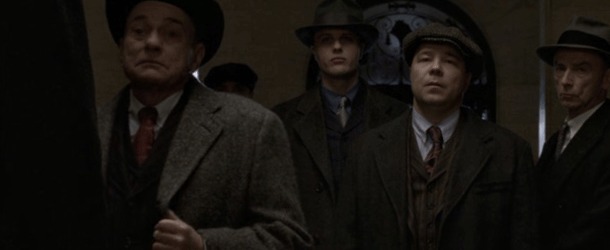Been learning a lot as I trudge along in my screenwriting career. I say “trudge” because it’s a slow climb. I’m not writing the big blockbusters, nor am I cashing those fat checks. I’m not even stacking that coin. What I am doing is writing smaller shows for colleagues and developing my voice as a screenwriter. I’m trying things out to see what works and what doesn’t work. In screenwriting terms: total n00b. One of the major things this n00b has discovered is that specificity is important. No, seriously. I mean it. IMPORTANT in all-caps, bolded, and underlined. May seem like this is a no-brainer, and it kind of is a no-brainer except for the fact that the “generic stuff” still makes its way out into the hands of readers, execs, and even two prolific screenwriting podcasters. A recent episode of theirs made me think about specificity and how to get back into the mindset of putting things on the page boldly and with purpose.
In the screenwriting world, we start everything with the slugline (technically we start with the title page, but that’s me being pedantic).
[Scrippet]
INT. HOME – DAY
[/Scrippet]
Here we’ve got the interior of a home during the day. It’s passable, but hardly specific. After reading through a bajillion of these, the line almost ceases to exist. Wait. Where are we again? A better option would be to make the house specific to a character or specific in some way that tells us more about its function in the rest of the script. Let’s say that this is our protagonist’s apartment (not a buyer’s market these days).
[Scrippet]
INT. OLAF’S APARTMENT – DAY
[/Scrippet]
Sure, but what if we tweak it just a WEEE bit more..
[Scrippet]
INT. OLAF’S DOWNTOWN APARTMENT – NIGHT
[/Scrippet]
Okay. I like this one better. It’s specific, and I know from reading this that the apartment could feature more than once in the story. I also know that it’s downtown, which gives me an initial idea of the setting, which can be massaged further by the following description.
[Scrippet]
INT. OLAF’S DOWNTOWN APARTMENT – NIGHT
An apartment like any other.
[/Scrippet]
An apartment like any other? I’m going to read that line and just assume we’re talking about all of the apartments I’ve had throughout my before-marriage life. Clothes strewn everywhere, film posters tacked (crookedly) to the wall, and my two deadbeat cats licking each others’ genitals while resting on my pillow. If that’s what you’re going for, then great (and creepy that you’ve been stalking me all this time). However, if you are writing a romantic comedy about hip and sexy singles living in New York, then that description might not work so well.
Maybe a better option would be to bypass this type of generic description altogether and let the details suggest the mundane. If this is an apartment like any other, prove it. Show me.
[Scrippet]
INT. OLAF’S DOWNTOWN APARTMENT – NIGHT
An apartment decorated by Ikea. Everything matches and is organized like it was meant for a magazine spread. Not one ounce of personality to be found.
[/Scrippet]
A much better description of the apartment and more indicative of the character who inhabits it. Definitely not an apartment like any other in the strictest sense, but it feels generic and mundane while reading otherwise.
And that’s really the whole point of screenwriting; specific things happen at specific times to specific people. If the story could happen to anyone anywhere, why would any of us want to watch it let alone read it? I say all of this like I’m some kind of expert in the field; I’m not. I’m learning the ropes like a lot of people out there wanting to break into the business. Hell, my examples could even be more specific. If there’s any takeaway from this, though, I’d hope that it would be to let specificity guide your writing.
Now, excuse me while I try to get some more writing done. Olaf is going to need a lot of work.





One of the things from lit crit classes that has stuck with me the most is that even though you’d assume that a generic character would read more universally, allowing people to project themselves onto the character or whatnot, it’s actually not true. Specific characters with specific personality traits in specific situations are much more universally relatable, even if the reader doesn’t share those personality traits or situations. It’s kind of paradoxical, but you’re totally right. And this is obviously more important for writers to learn than readers/critics. All we can do is go “this is why is doesn’t work.” You can make it work in the first place. :)
My first instinct on writing a scene is to come in fairly generic because, hey, I’m not the art director or the set decorator or the location scout. I also don’t consider myself much of a casting director either. But by making all the details generic, it makes the script a slog to read through, which is problematic since I would naturally want to get the script read.
As a viewer, you get those specifics on the screen, but imagine if you had to read something as generic as “INT. HOME – DAY – A place like any other.” and then read 50 more scripts that were the same!
Practicing what I’ve preached is another beast, though. It’s easy to say all this, but then comes the application in my own writing.
Even beyond being a slog/boring to read through, specificity actually makes it much easier for the art director/set decorator to do their jobs. I’ve never done that, per se, but in building websites for people, it’s much easier when they give you some restrictions than when they just go “do whatever you want.” Too much freedom stifles creativity.
Plus, in describing Olaf’s apartment the way you did above, you’ve used the setting to help build the character. We haven’t even met Olaf yet, but I have an idea of what kind of person would live in an apartment like that – even if designing sets isn’t your job, defining characters is, and his apartment helps define him. The character who lives in the apartment you described as your own pre-marriage apartment is a very different person than Olaf.
Adding those two things together, if you aren’t specific about things like this, the art director has to become a literary detective and figure out what kind of apartment Olaf would live in. Or, since you wrote the character and have an idea of where he’d live, you could put it in the descriptions and save the art director a lot of trouble. :)